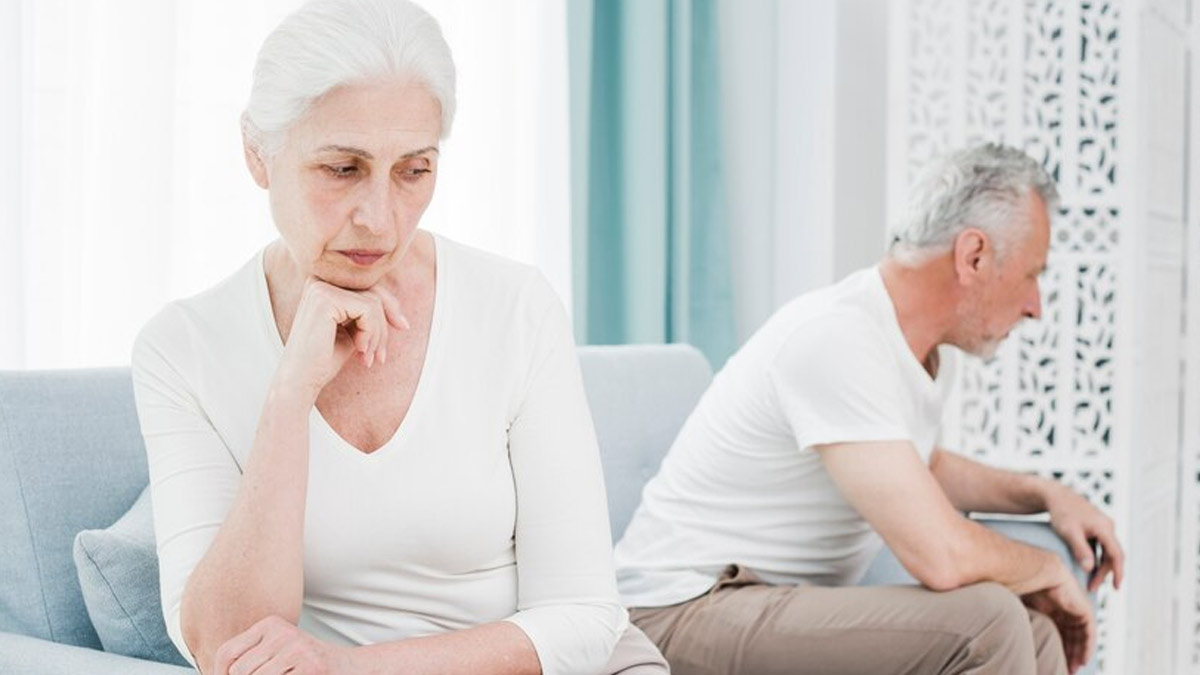
Many people view Sexually Transmitted Diseases (STDs) as illnesses that only affect the young. But that's not the case. Older adults are as likely (if not more) to contract the infection as young individuals. In fact, the numbers are only growing, as per the US Centers for Disease Control and Prevention (CDC). Unfortunately, STDs in the elderly group are often overlooked due to various reasons. This puts them in grave danger.
Table of Content:-
In an interaction with the OnlyMyHealth team, Dr Kavitha Kovi, Head of Department-Obstetrics and Gynaecology, Aster Women and Children Hospital, Whitefield, Bengaluru, says, "Older adults no longer see themselves as old people; they no longer succumb to the conventional boring life. They are empowered and are changing norms, and this has resulted in older adults being active even on dating apps. They remarry, and these factors also contribute to older adults having more than one partner and increased chances of being infected with STDs.”
Let’s discuss this in detail and learn about ways to prevent STDs in older adults.
Also Read: Everything You Need To Know About STI And It’s Prevention, Doctor Elucidates
Growing Numbers Of STD Cases Among Older Adults

Shockingly, more than 10 lakh sexually transmitted infections are acquired every day worldwide, says the World Health Organization (WHO). The bad news is that the majority of it remains asymptomatic.
As per the global health body, there are around 37.4 crore new infections with one of four curable STIs, namely chlamydia, gonorrhoea, syphilis, and trichomoniasis.
Given that alarming data, it is important to recognise that everyone, including older adults, is at risk.
According to the CDC, STD cases among adults aged 65 and above have more than doubled over the past decade. New HIV infections are said to be growing at a higher risk in individuals aged 50 to 40 years and under, as per a 2018 report by the CDC, says Dr Swati Rajagopal, Consultant, Infectious Disease and Travel Medicine, Aster CMI Hospital, Bengaluru.
"Many factors have contributed to this increase in STD cases among older adults, and they stem from a single problem. Many clinicians and scientists do not spend enough time talking about older individuals having sex and are usually overlooked in many STD studies,” she emphasises.
According to Dr Kovi, this upward trend may also be attributed to changing sexual attitudes and behaviours, divorces, increased longevity and sexual activity, a lack of comprehensive sexual health education, biological vulnerabilities, and the potential for undiagnosed infections due to the asymptomatic presentation of some STDs.
“STDs do not discriminate based on age, and they can be transmitted from one person to another through sexual intercourse. The infection can be caused by bacteria, viruses, or other microorganisms that are transmitted through body fluids like semen, vaginal fluids, or the discharge of an infected sexual partner,” she explains, hence suggesting that anyone is prone to contracting STDs.
What Puts Older Adults At A Greater Risk Of STD?

Some of the common factors that put older adults at a higher risk of STDs include:
- Weakened immune system
- Lack of proper preventive measures against STDs, like regular screening for sexual problems
- Not taking safety measures like using condoms, mainly because of the misconception that senior citizens are less prone to STDs
- Lack of awareness and education to practise safe sex
Dr Kovi adds that the current situation in old-age facilities can also be a contributing factor to STD prevalence among this age group.
“STDs spread quickly in old age facilities not only because of them being sexually active but also because of diseases like HPV (Human Papillomavirus) and herpes that spread from skin-to-skin contact,” she says.
Therefore, while the conversations around sexual health with older adults may be awkward and uncomfortable, it is an important discussion to have.
Also Read: Sex During Periods Is Safe But Does It Prevent Pregnancy? Dr Anjali Kumar Demystifies Menstrual Sex
Preventive Measures

To prevent STDs in older adults, here are some precautionary measures to take:
- Having safe sexual intercourse by using condoms, dental dams, and diaphragms
- Being mindful while using condoms and following proper instructions
- Maintaining proper hygiene before and after sexual intercourse to prevent infections like UTIs
- Maintaining mutual monogamy
- Making sure to get tested along with your partner before being sexually involved with them
- Ensuring you don’t share hygiene products like towels or napkins with anyone else, if in an old-age facility
Conclusion
STDs can happen to anyone, including older people. In fact, the risk may be even greater for people aged 60 and above. Therefore, it is important to have conversations around STDs with senior citizens, especially those who are sexually active. In most cases, infections are overlooked either due to the absence of symptoms and a lack of regular screening or because people underestimate the elderly’s potential to remain sexually involved.
How we keep this article up to date:
We work with experts and keep a close eye on the latest in health and wellness. Whenever there is a new research or helpful information, we update our articles with accurate and useful advice.
Current Version